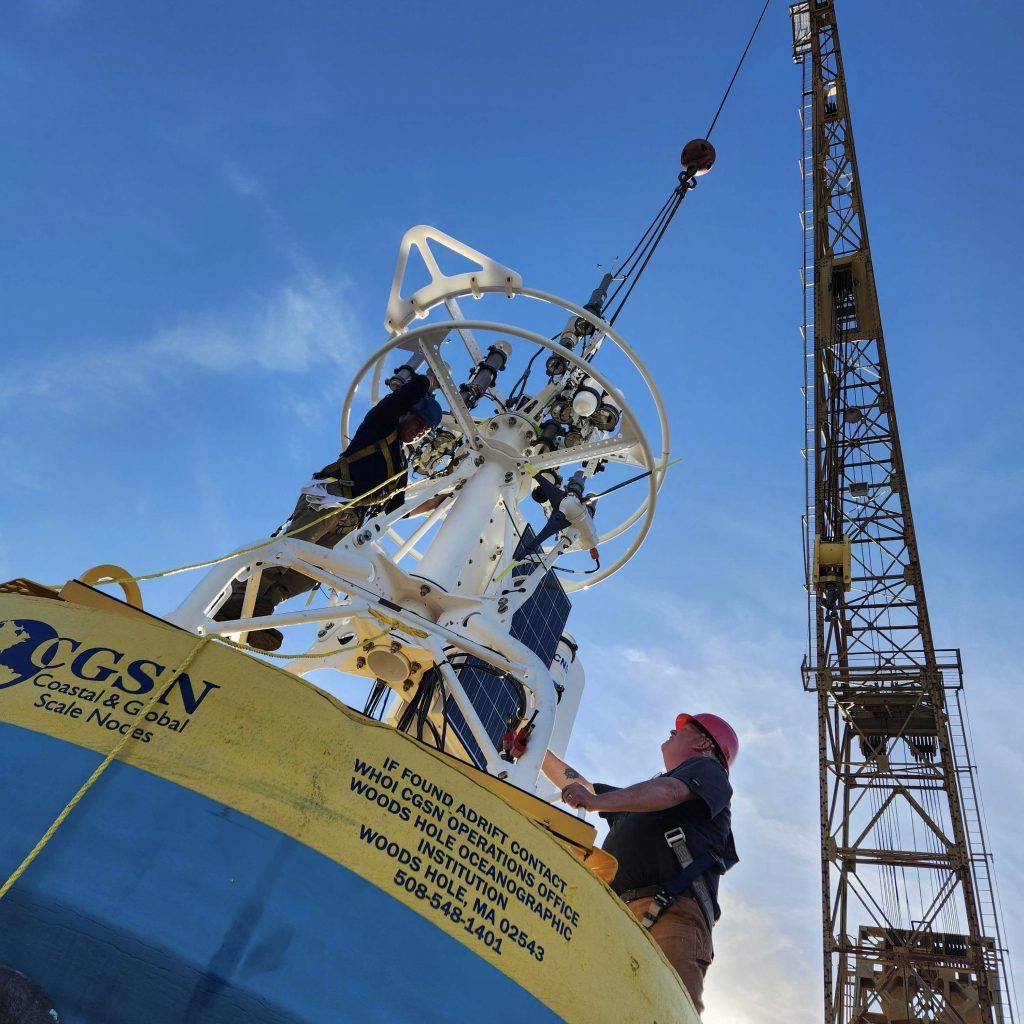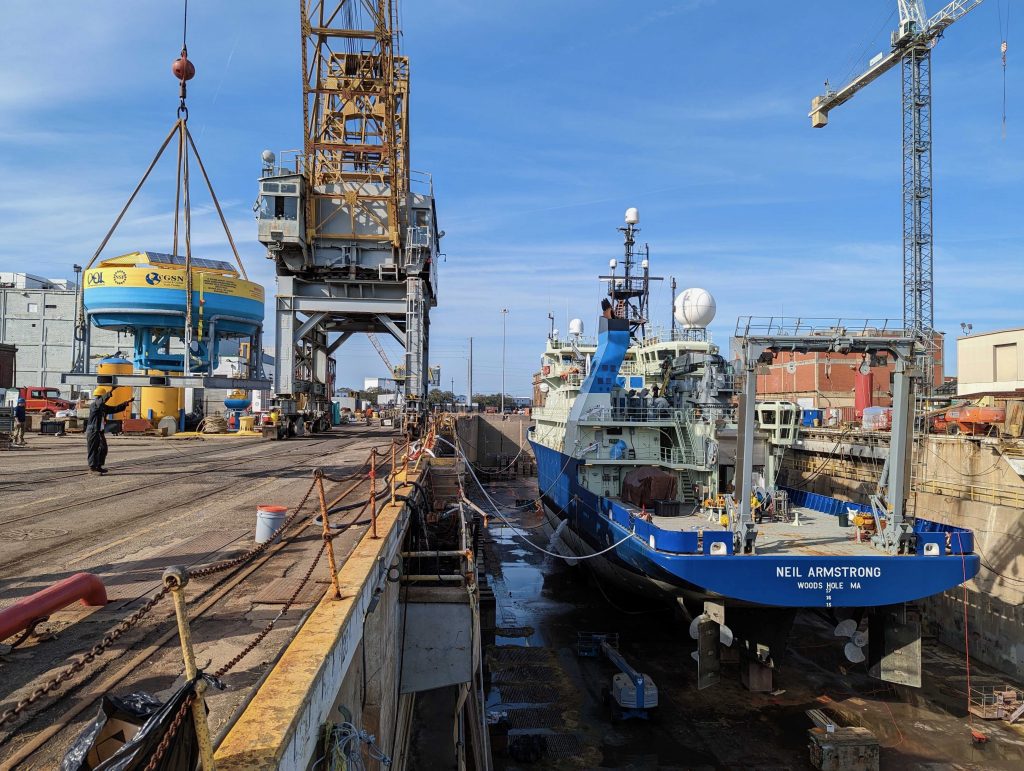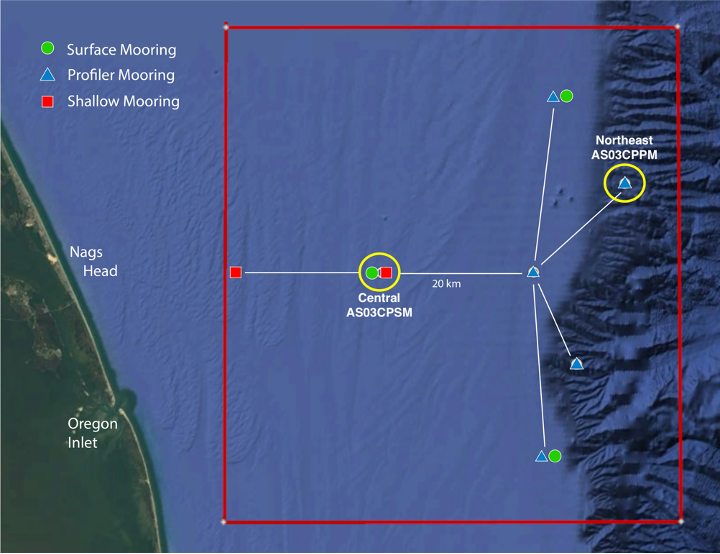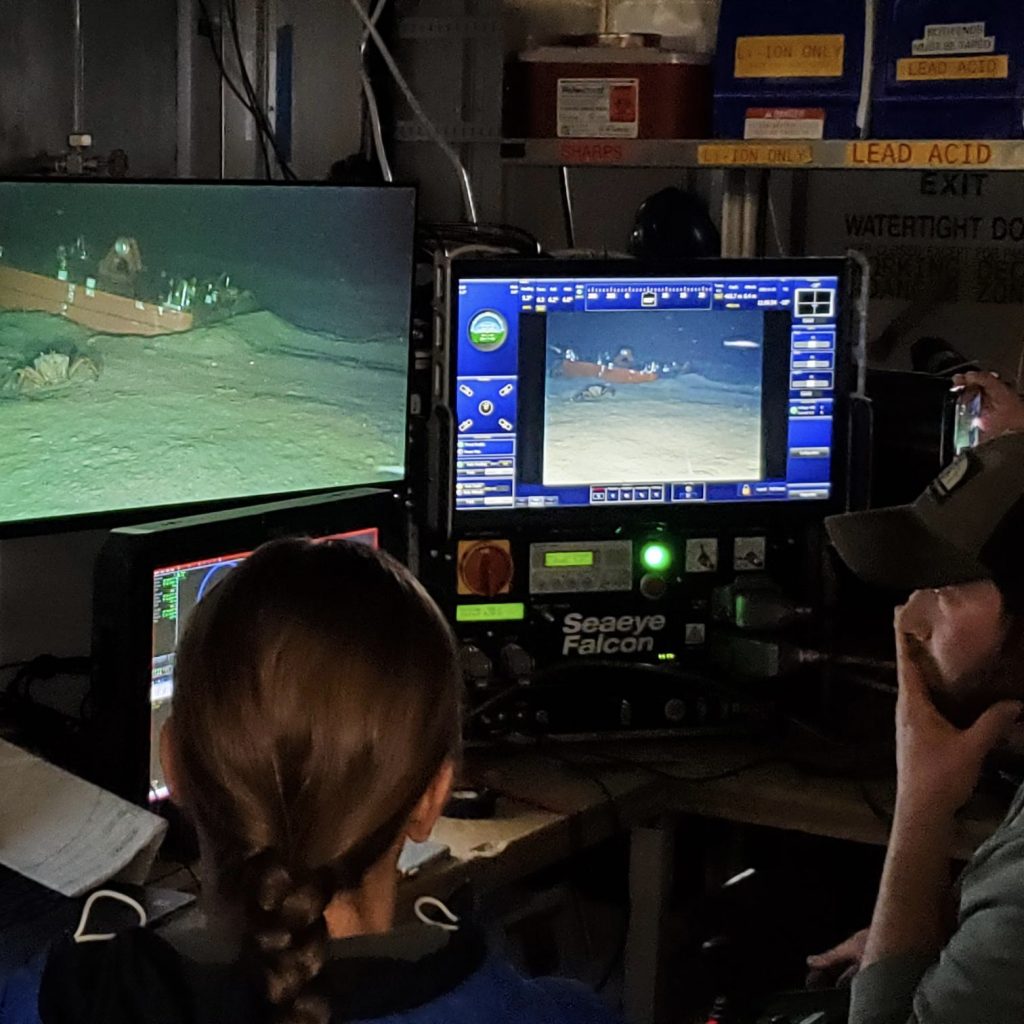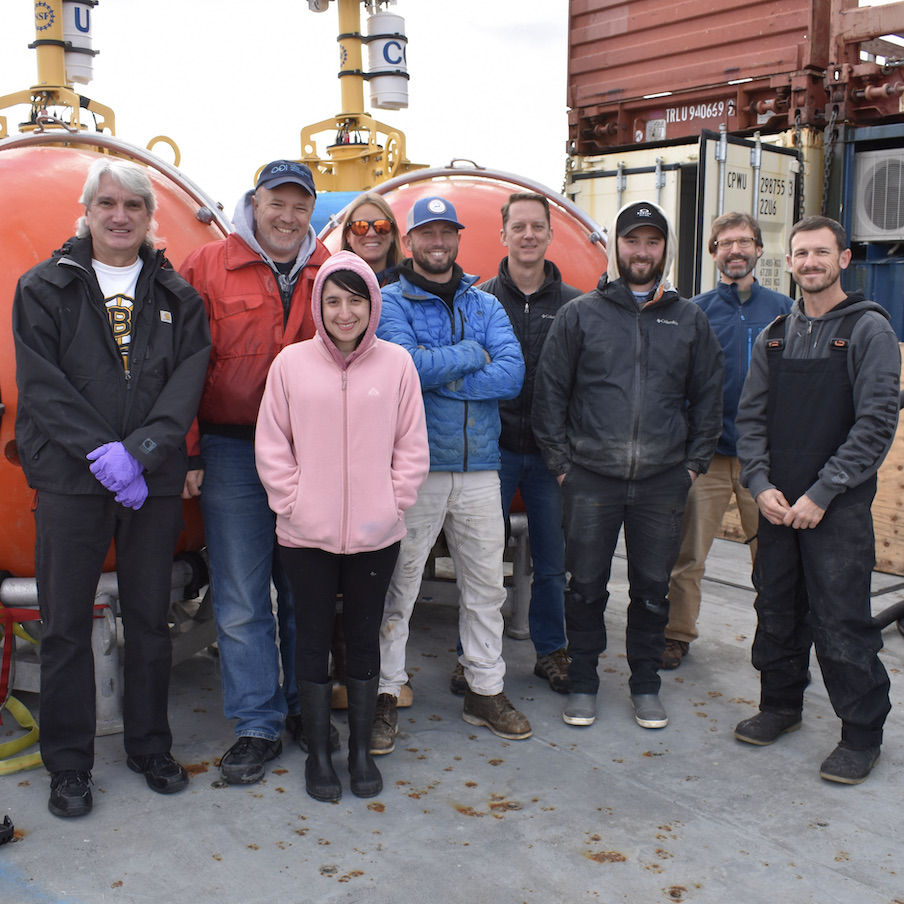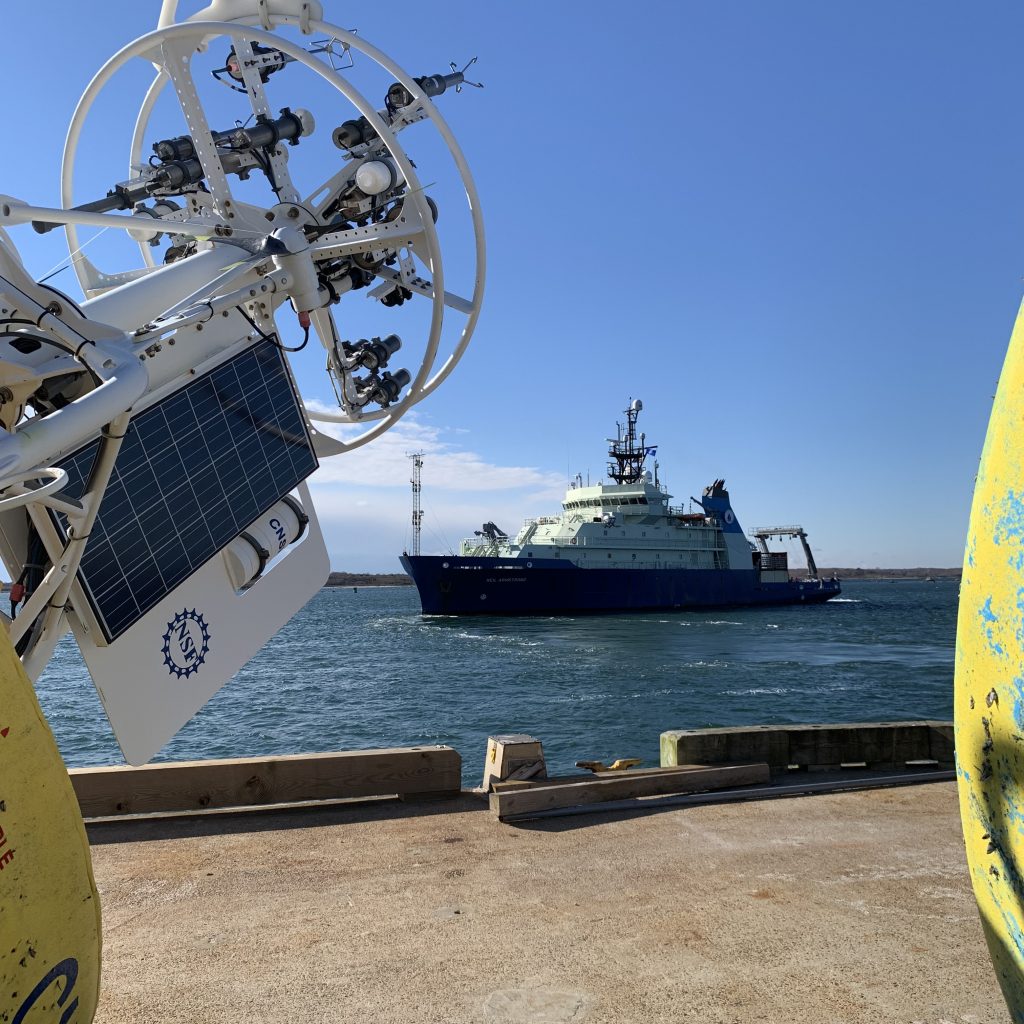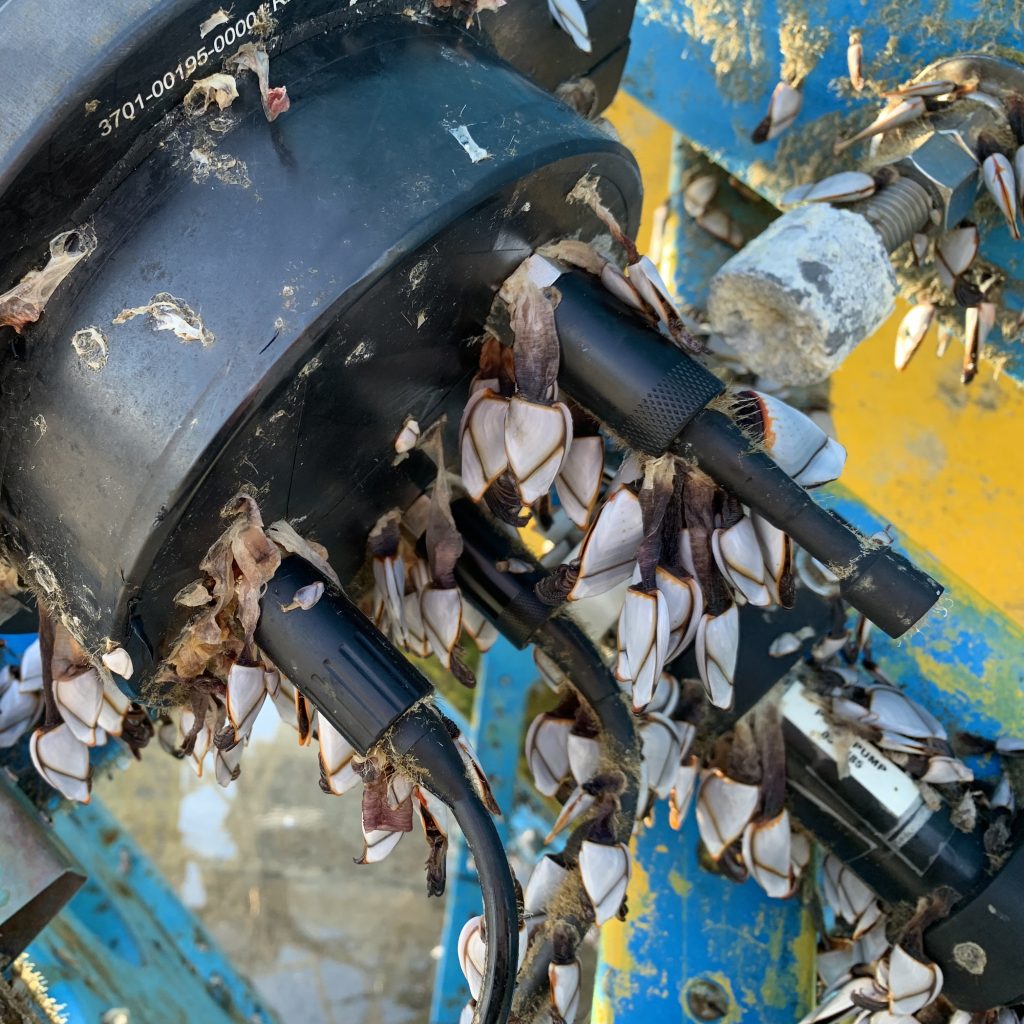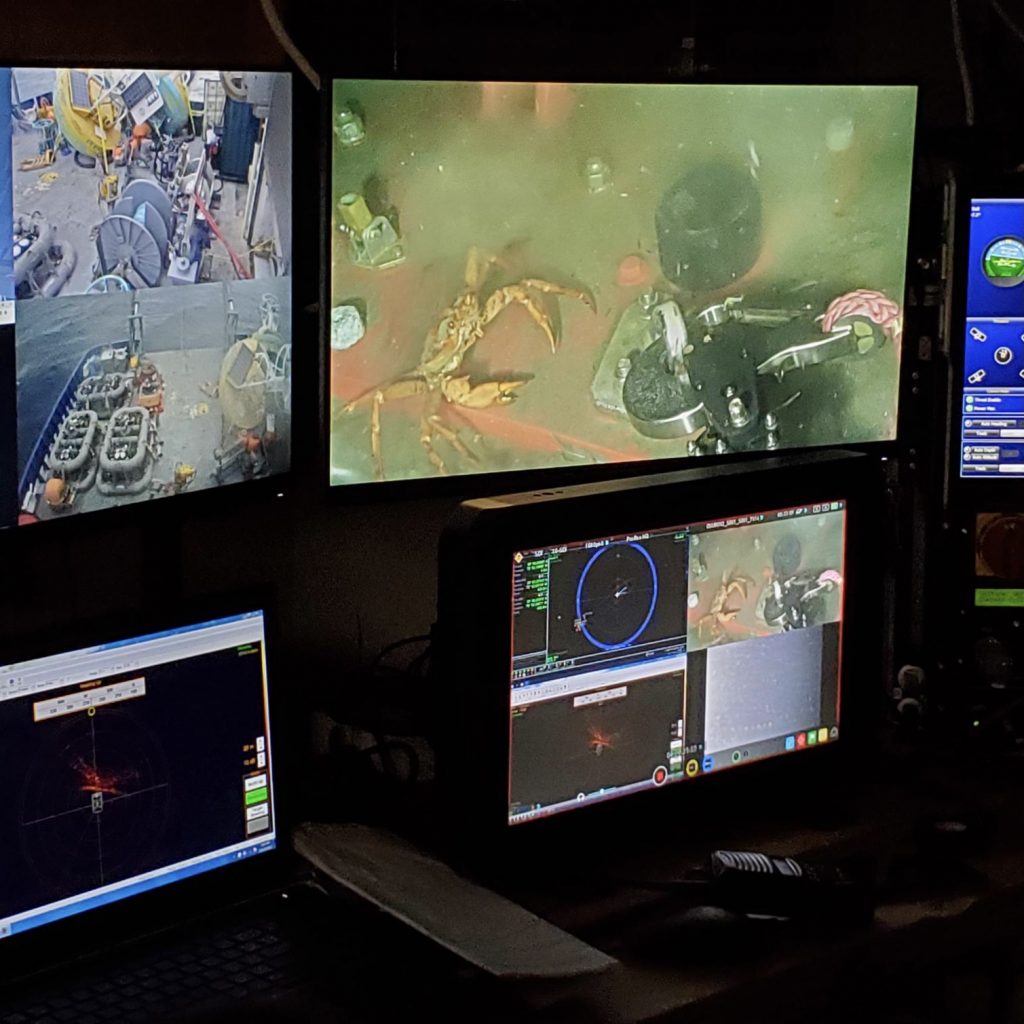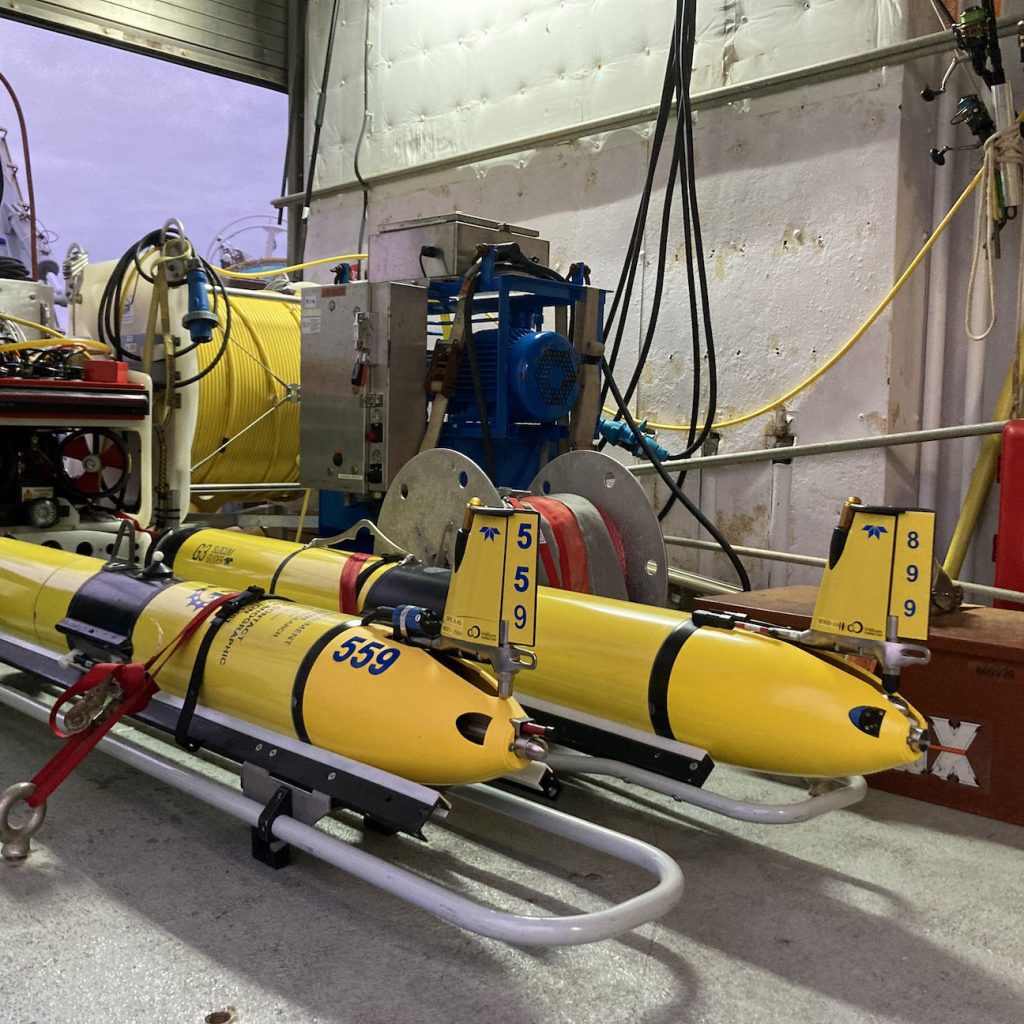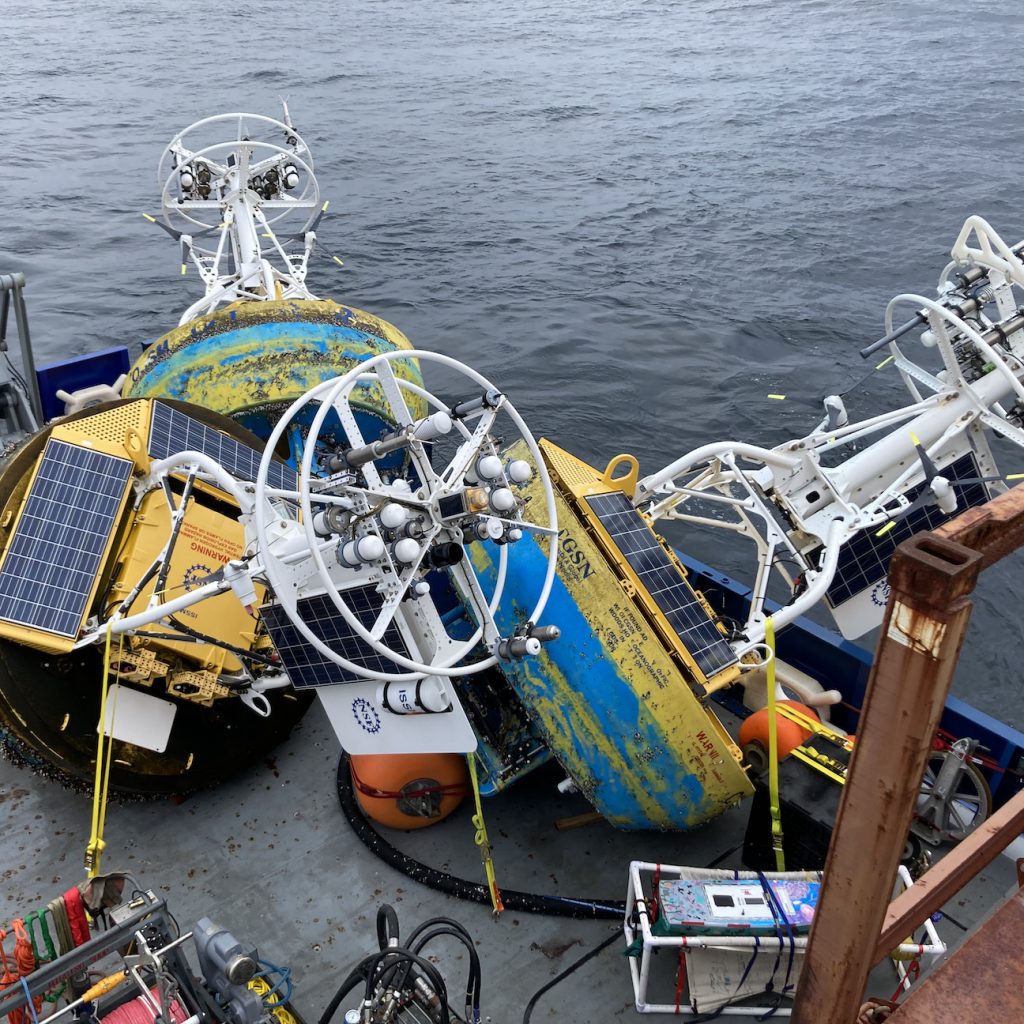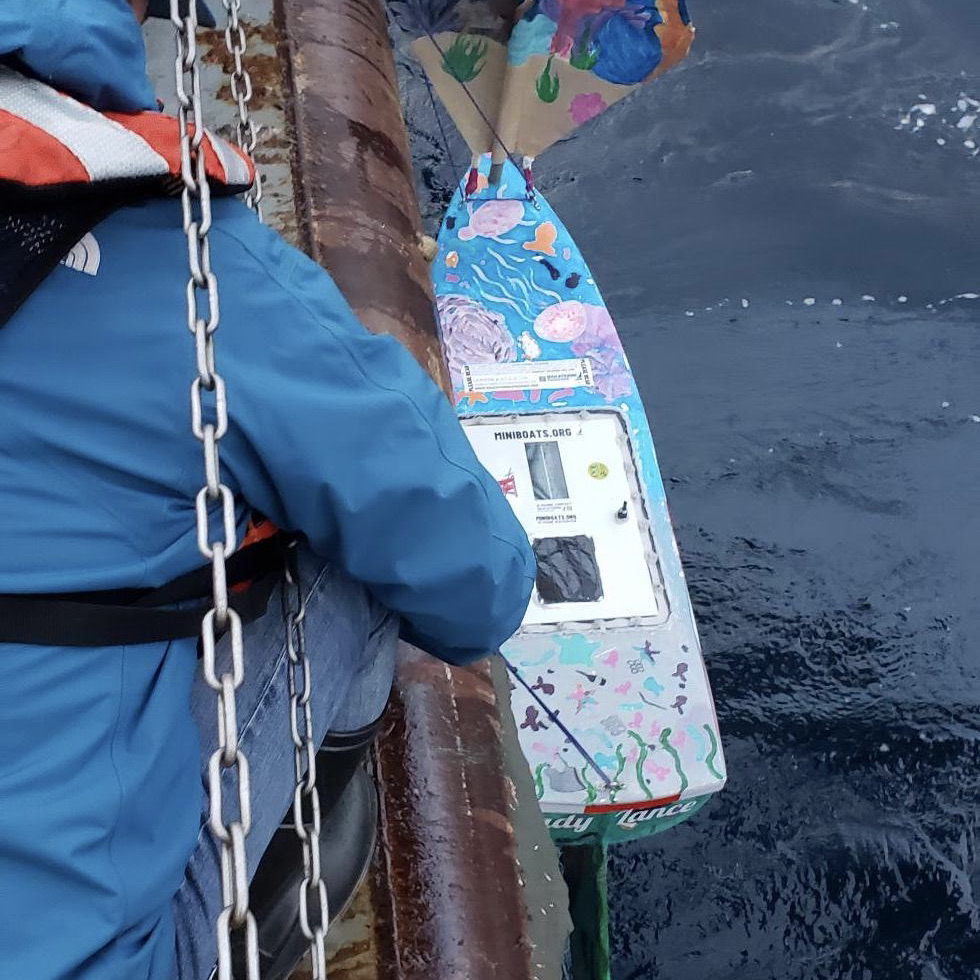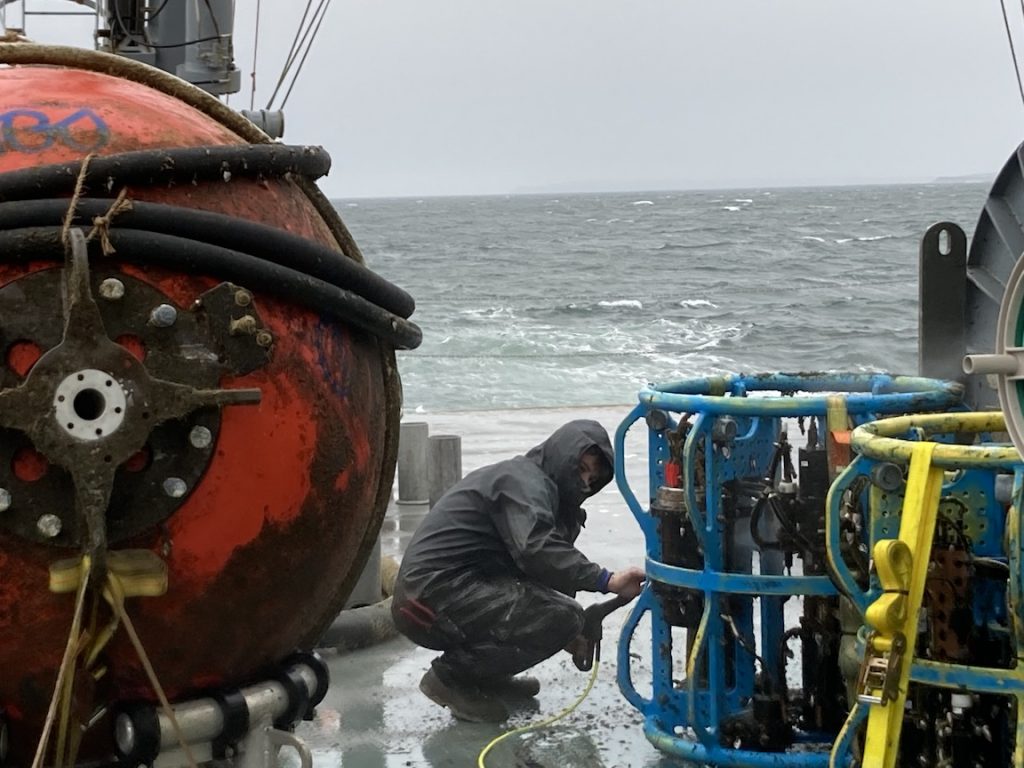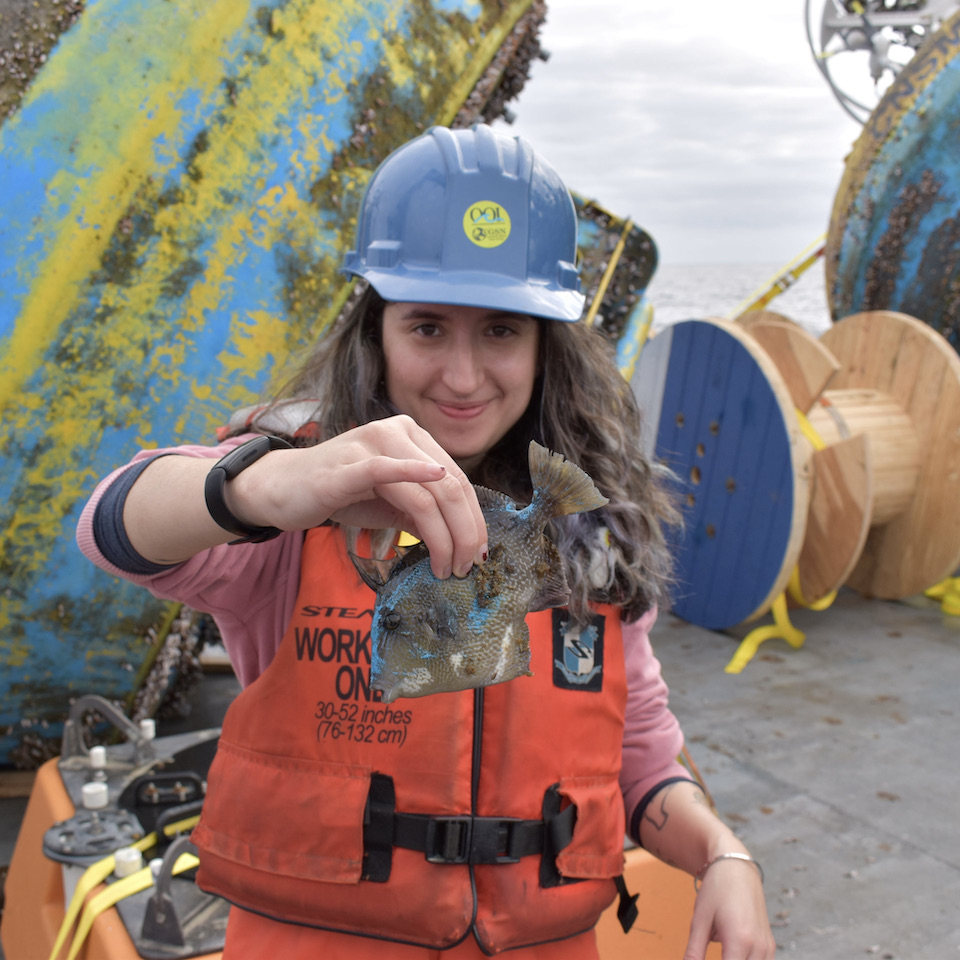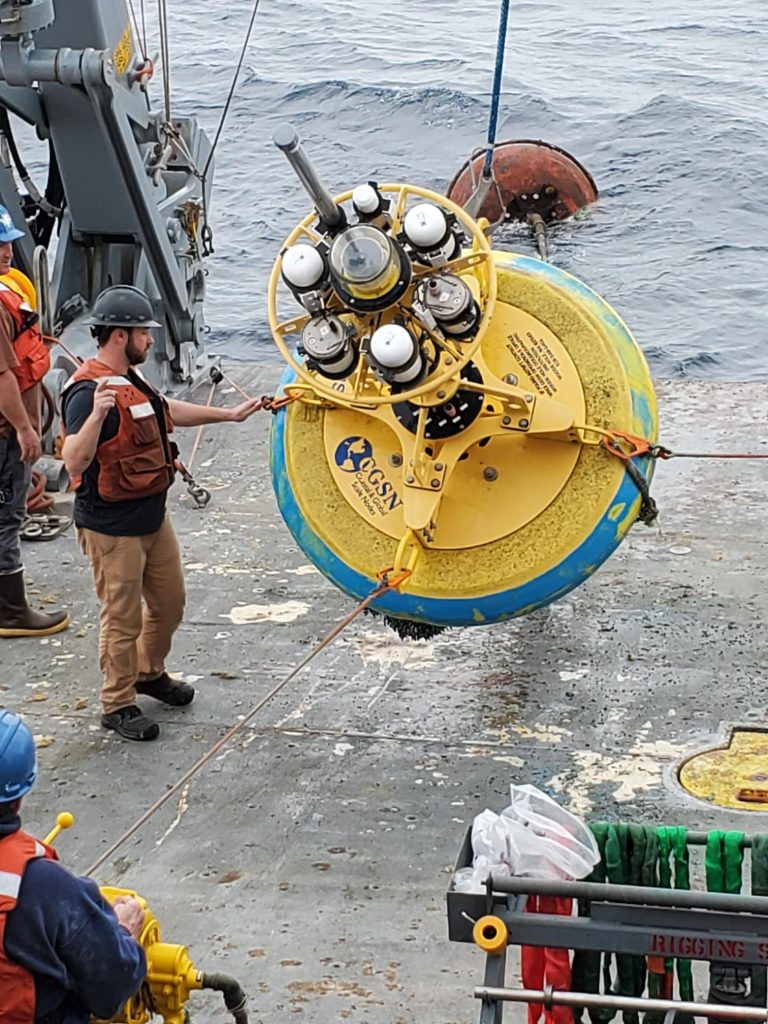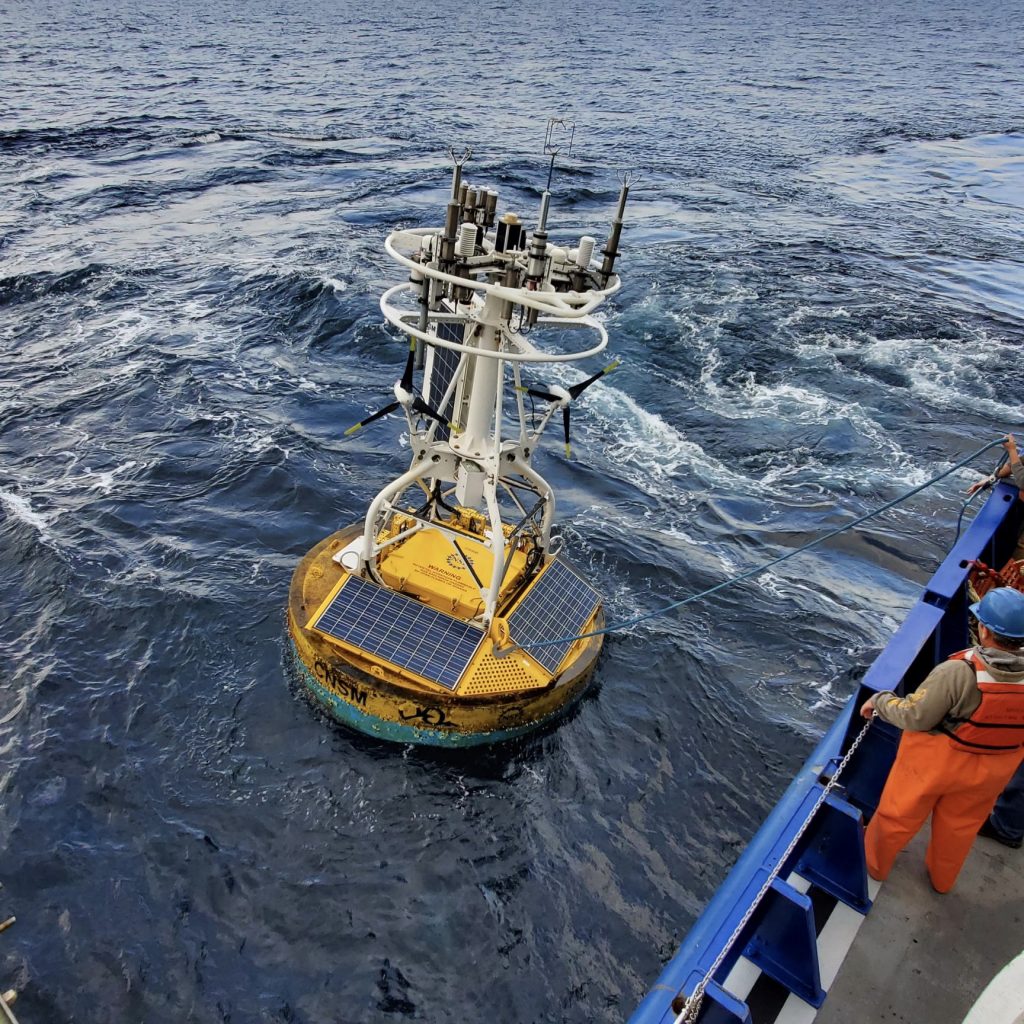- All
- Endurance 16
- Endurance 17
- Endurance 18
- Endurance 19
- Endurance 20
- Endurance 21
- Endurance 22
- Endurance 23
- Irminger 10
- Irminger 11
- Irminger 12
- Irminger 9
- Pioneer 17
- Pioneer 18
- Pioneer 19
- Pioneer 21
- Pioneer 22
- Pioneer MAB At-Sea Tests
- Pioneer MAB Initial Deployment
- Pioneer MAB Test Deployment
- RCA VISIONS 22
- RCA VISIONS 23
- RCA VISIONS 24
- RCA VISIONS 25
- Station Papa 10
- Station Papa 11
- Station Papa 12
- Station Papa 9
Moving Quickly
The mobilization of the Pioneer MAB test moorings is moving quickly thanks to the expertise of the OOI-CGSN team, the crew of the Armstrong, and…
Assembly Complete
Jim Ryder and Kris Newhall complete assembly of At-Sea Test 3 surface buoy to be deployed at new Pioneer Mid-Atlantic Bight location this month. The…
Well and Tower Preparations
The OOI-CGSN team members Alex Franks and Jared Schwartz, with dockyard support, prepare the At-Sea Test 3 surface mooring well and tower for integration into…
Moving Parts
The RV Neil Armstrong crew move the buoy frame and buoyancy foam for the At-Sea Test 3 surface mooring from the ship to the dock…
Double Duty
Doing two things at once. The R/V Neil Armstrong is in a Charleston, SC drydock for inspection and also supporting the mobilization of the At-Sea…
Hull Inspection
The R/V Neil Armstrong in dry-dock for hull inspection prior to departing for the Pioneer MAB test cruise. Shipyard workers, crew, and the science party…
Coastal Pioneer Array MAB
Schematic drawing of the Pioneer Mid-Atlantic Bight (MAB) moored array to be deployed off the coast of Nags Head, North Carolina. The full array, to…
Mission Accomplished!
It took a few tries, but the last two anchors of the Pioneer New England Shelf array were successfully recovered under the able guidance of…
Marking First Deployment
Exactly nine years ago, 21 Nov 2013, at 1:16 pm the Pioneer 1 team completed the deployment of the very first Pioneer Array mooring,CP01CNSM-0001.The Pioneer…
Historic Departure
The departure of the R/V Neil Armstrong from the Woods Hole dock for the second leg of the Pioneer 19 expedition on November 17 was…
Barnacles Galore
After six months at sea, Gooseneck barnacles (Pollicipes polymerus) make the Pioneer Array home. The instrumentation serves as an attractive habitat for these filter feeders….
Equipment Lineup
When the R/V Neil Armstrong pulled into the Woods Hole Dock on November 15 at the end of the first leg of the Pioneer 19…
Anchor Recovery Attempt
Before heading back to Woods Hole to unload and remobilize for leg two, the Pioneer Team aboard the R/V Neil Armstrong had a final mission—to…
Last Two Gliders
OOI Coastal Gliders have been collecting data at the Pioneer Array site on the New England Shelf for the community to address science requirements since…
All Moorings Aboard
In spite of the loss of a day of recovery operations due to weather, the Pioneer 19 team successfully secured the last of three…
Students’ Mini-Boat & Drifter Launched
On Sunday November 13, 2022, the Pioneer 19 Team and crew of the R/V Neil Armstrong switched gears from their Pioneer recovery operations to launch…
Wind and Waves
After a successful day Friday and recovery of the Surface and Profiler moorings in the balmy 70+ degree North Atlantic, post-tropical storm Nicole’s winds and…
Profiler Mooring Recovery
Friday was a great day to be aboard the Armstrong. The weather cooperated and the team recovered the inshore profiler mooring. Shown here are some…
Two on Deck
The Pioneer Array 19 team marked Veteran’s Day with the successful recovery of the Coastal Inshore Surface Mooring. Like glider 559, the mooring was initially…

